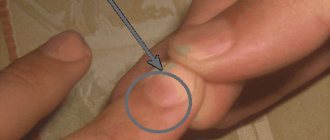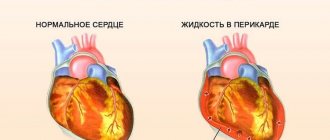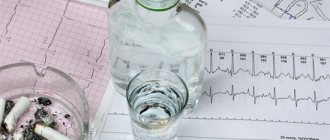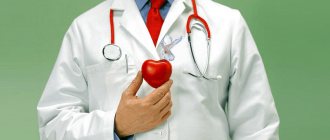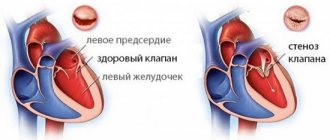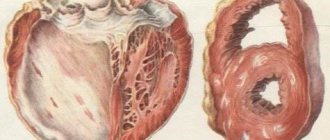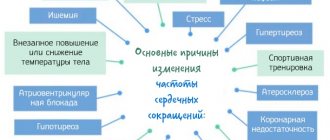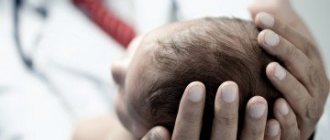How to diagnose?
You can suspect a pathological condition at home. Look out for the following symptoms:
- dizziness;
- general weakness, increased fatigue;
- autonomic reactions: increased sweating, feeling of fear;
- feeling of heartbeat.
These signs are nonspecific and can occur with other diseases. Therefore, for a more specific diagnosis, it is necessary to determine the pulse rate in the radial and carotid arteries. If the pulsation in the arm has a lower frequency, this is an indication for further examination. You need to seek medical help.
First of all, the doctor will compare two indicators - heart rate and pulse. To do this, you need to auscultate the heart using a phonendoscope. One specialist listens to the frequency of the heartbeat, and the other simultaneously palpates the pulse in the arm. This is the definition of pulse deficit. After this, an additional examination is prescribed, which will help identify the cause of this condition.
Both laboratory and instrumental methods are used:
- Electrocardiogram. ECG is the first test method that should be used. Allows you to identify heart rhythm disturbances - atrial fibrillation, ventricular and supraventricular extrasystole.
- Coagulogram. Indicates the state of the coagulation and anticoagulation system. Based on the results of a coagulogram, the presence of thrombosis can be suspected.
Holter monitoring. If there are signs of rhythm disturbance, and the electrocardiogram does not show pathological changes, Holter monitoring is used. This is a method that allows you to take an electrocardiogram throughout the day. Short-term pathological changes will not go unnoticed.- Echocardiogram. This method allows you to identify pathology of the heart valve apparatus. For example, mitral insufficiency, infective endocarditis. Echocardiography can also determine the presence of blood clots in the atrium.
- Plain X-ray of the chest organs. Allows you to identify space-occupying formations in the chest cavity that compress the aorta. For example, a tumor process.
Additionally, general clinical tests are prescribed:
- complete blood count - determination of platelet count;
- blood chemistry;
- blood test for hormones (if endocrine pathology is suspected).
Determining the cause is very important for choosing further treatment tactics. It is impossible to effectively carry out therapy without taking into account the primary disease.
Diagnostics
To find out why a rare pulse is recorded in an adult, you need to consult a therapist. The doctor will prescribe simple tests that will make it possible to form a diagnostic hypothesis:
- general blood analysis;
- electrocardiogram.
He will also conduct a general examination, which will identify signs of heart failure, pathology of the thyroid gland or adrenal glands.
If necessary, the patient is referred to an endocrinologist, but most often he ends up with a cardiologist. To clarify the specific causes of a rare pulse, daily ECG monitoring is used. It does not make a diagnosis and should only be used in conjunction with examination and other research methods.
This may be echocardiography, transesophageal electrophysiological study, ECG test with exercise. Only after carrying out all these studies can a cardiologist say with sufficient confidence about the causes of a rare pulse and possible methods of treating them.
What to do: first aid for an ordinary person
If there is no pulse, you need to do a direct cardiac massage. The person providing first aid must protect himself from the influence of the factors that caused the victim’s cardiac arrest and make sure that there is no pulse. If there is no beating or breathing, the victim must be carefully laid on his back, with his limbs aligned along the body and the chest area freed from clothing. It is necessary to perform artificial respiration with external cardiac massage (one or two people can do it). In this case, the hands are placed on the chest, in the center, pressing quickly and firmly about 30 times. The oral cavity is cleared of foreign bodies, the head is tilted back, the chin is raised slightly, the nose is closed with the fingers and 2 deep breaths are taken into the mouth (artificial respiration). 30 compressions and 2 breaths alternate until the ambulance arrives.
Pulse deficiency is observed under what conditions, the reasons for its occurrence
The most common causes of pulse deficiency are associated with the release of a small volume of blood into the aorta, this is possible in the following conditions:
- atrial fibrillation (uncoordinated contractions of the atria with insufficient filling of the ventricles);
- extraordinary contraction (extrasystole), which occurs after the usual one, the ventricle does not have time to receive the full volume of blood;
- an attack of tachycardia (a rare cause), when contractions are so frequent that in some cases there is no full flow of blood into the aorta.
If the filling of the ventricles with blood is below normal, but the internal pressure on the aortic valve is sufficient, then ejection occurs, and with a very small amount, the heart contracts, but the valves are completely closed. In the first case, a weak pulse wave occurs, it quickly subsides, and in the second, there is no blood flow into the arterial network at all.
With atrial fibrillation with tachysystole (frequent contractions), the pulse deficit is constantly present. In such patients, the heart works at an increased rate, wears out faster, and the blood supply is not enough to nourish the internal organs, the brain and the heart muscle itself.
With extrasystole and paroxysmal (attack-like) tachycardia, pulse deficiency usually occurs periodically; it is rarely detected during a routine examination of the patient; daily monitoring (control) of two indicators is required.
Possible reasons
Pulse deficiency occurs with a variety of rhythm disturbances, accompanied by severe tachycardia, that is, rapid heartbeat. These may be the following types of tachycardia:
- sinus tachycardia (rare cause);
- supraventricular or ventricular tachycardia.
However, the main cause of pulse deficiency is the tachysystolic form of atrial fibrillation, when the heart beats quickly and irregularly. The pulse is lower than the heart rate.
If the pulse deficit is too great, it may be accompanied by signs of oxygen deficiency (dizziness, fainting), since, despite the seemingly frequent work of the heart muscle, blood does not enter the arteries in the required quantity.
Thus, a rare pulse, as an exception, can occur not only with a slow, but also with an accelerated heartbeat. However, this situation is rarely observed. To determine the pulse deficiency, it is necessary to have a phonendoscope and simultaneously listen to the heartbeat itself and feel the pulse.
A slow heartbeat is accompanied by a rare pulse, that is, a decrease in the frequency of pulse waves less than 60 per minute. The causes of this condition can be both physiological (natural for the body) and pathological. A slow pulse also manifests itself in different ways - from a complete absence of symptoms to dizziness and loss of consciousness.
The pulse is directly related to the work of the heart. Therefore, the causes of pulse deficiency mainly coincide with the etiological factors of bradycardia (slow heartbeat).
Under natural conditions, a decrease in heart rate is observed at rest:
- in trained people, athletes;
- in many people at rest, especially during sleep;
- in the elderly.
This condition may also be a sign of disturbances in the formation of impulses that regulate the functioning of the heart. These are ECG phenomena such as:
- sinus bradycardia;
- rhythm from the atrioventricular junction;
- idioventricular rhythm;
- bradysystolic form of atrial fibrillation;
- ventricular fibrillation and flutter;
- sinoatrial or atrioventricular block of the second degree.
Such conditions are not a diagnosis in themselves. If one of them is recorded during an ECG or daily ECG monitoring, a consultation with a cardiologist is required to determine the cause of the rare pulse.
A person's pulse deficiency means that his heart beats less than 60 per minute. This does not mean that there is any disease. However, in some cases, a constant pronounced slowing of the pulse that does not go away with physical activity can be a sign of many diseases of the heart and endocrine system.
Deficiency at normal pressure
Pulse deficiency may not be accompanied by any symptoms, in which case they speak of hemodynamically insignificant bradycardia. In this condition, the human body has enough oxygen, even with a slower heart. Typically, this condition occurs if the heart rate is not lower than 40 per minute.
Causes of pulse deficiency at normal blood pressure:
- good physical fitness of the body;
- state of rest or sleep;
- age 65 years and older;
- heart disease - ischemic heart disease, atherosclerotic, post-myocardial or post-infarction cardiosclerosis;
- taking medications that slow down the pulse and normalize blood pressure in hypertension (primarily beta-blockers - atenolol, metoprolol, bisoprolol, nebivolol and others);
- taking medications that do not affect normal blood pressure but slow down the heartbeat (ivabradine);
- atrial fibrillation, or rather its bradysystolic variant;
- sick sinus syndrome;
- mild hypothyroidism (impaired hormonal activity of the thyroid gland) or adrenal insufficiency;
- obstructive sleep apnea;
- lack of potassium;
- complications after heart surgery.
Pulse deficiency with normal blood pressure and no complaints does not require special treatment. However, all of the above conditions, even with normal blood pressure, may be accompanied by other symptoms:
- chest pain;
- shortness of breath when walking, climbing stairs;
- interruptions in heart function;
- weakness, fatigue;
- drowsiness and others.
In this case, the help of a cardiologist and consultation with an endocrinologist are necessary.
Pulse deficiency and low blood pressure
In situations where there is a deficiency of pulse and low blood pressure, this is usually caused by various pathological processes, as well as severe hypothermia (almost freezing). In this case, cardiovascular failure begins, which is accompanied by a lack of oxygen and depletion of the body’s compensatory reserves in the form of increased pressure.
The causes of this condition are severe heart disease, accompanied by serious rhythm disturbances. Thus, post-infarction cardiosclerosis can lead to ventricular fibrillation, during which the heart contracts quickly but ineffectively, and a person’s life is in danger. Therefore, for any attack accompanied by a low pulse and low blood pressure, you need to call an ambulance.
With a lack of pulse and low blood pressure, so-called hemodynamically significant bradycardia occurs, that is, it is accompanied by dizziness, fainting, falls, and impaired blood supply to the brain, kidneys and other important organs. The pulse is usually less than 40 per minute.
More often, pulse deficiency is typical for those
Pulse deficiency in the vast majority of cases is associated with heart disease; it is typical for patients with diagnoses:
- coronary heart disease – myocardial infarction, angina pectoris;
- cardiosclerosis after a heart attack or inflammation of the heart muscle (myocarditis);
- heart disease;
- extensive myocarditis, rheumatic carditis;
- cardiomyopathy (myocardial damage without inflammation due to metabolic disorders or high blood pressure);
- severe course of heart failure, hypertension.
Atrial fibrillation can also occur as an independent disease when its cause cannot be determined. Such patients are diagnosed with idiopathic atrial fibrillation.
Predisposing factors include:
- increased thyroid function (hyperthyroidism, thyrotoxicosis);
- abuse of alcohol, caffeinated drinks;
- overdose of cardiac glycosides or heart stimulants (for example, Adrenaline, Dopamine);
- frequent stressful conditions, overwork, lack of sleep;
- deficiency of potassium in the blood (use of diuretics, loss through sweat, diarrhea, vomiting);
- diabetes;
- obesity;
- smoking;
- chronic, long-term diseases of the kidneys and lungs.
Deficiency Treatment
Sometimes, if there is a deficiency of heart rate at home, it is enough to do gymnastics, drink sweet tea or coffee to bring the heartbeat in order. You should consult a doctor in the following cases:
- during physical activity the pulse does not increase;
- weakness and dizziness are noted;
- fainting occurs periodically.
What can be done to treat pulse deficiency:
- consult a doctor, undergo an examination and find out the cause of this condition;
- begin treatment of the cause that caused the rare pulse.
A rare pulse itself (if it is not caused by a deficiency) has only one way to be restored to normal - this is the installation of a pacemaker.
A pacemaker (pacemaker) can be installed in the following cases:
- sick sinus syndrome;
- acquired complete atrioventricular block in adults;
- carotid sinus hypersensitivity syndrome (neurocardiogenic syncope, when, for example, a person loses consciousness because a tight collar rubs his neck);
- more than one episode of ventricular fibrillation;
- some congenital rhythm disorders.
Currently, modern pacemakers are used, which ensure adaptation of the heart rate to the load performed by the patient, so they are physiological and do not limit human activity. The operation can be performed at any age.
Therefore, if there is a constant low pulse, accompanied by poor health, constant weakness, inability to do anything, dizziness or loss of consciousness, it is necessary to contact a cardiologist-arrhythmologist to decide on pacemaker implantation. Drug therapy for this condition is ineffective.
Prevention
The most effective way to keep your heart rate normal is to reduce your risk of developing cardiovascular disease. If the patient already has heart disease, it must be monitored and treated.
To reduce the risk of heart disease and the occurrence of pulse deficiency, you can take the following measures:
- Dedicate 5 days a week to physical training (for example, walking) for 30 minutes;
- Eat healthy foods low in fat, salt and sugar, rich in fruits, vegetables and whole grains;
- avoid obesity;
- Monitor blood pressure and cholesterol levels and take appropriate medications if necessary;
- no smoking;
- do not drink alcohol (scientists have now proven that even minimal doses of ethanol are dangerous for the heart);
- avoid unnecessary stress and learn to cope with your emotions;
- undergo regular medical examinations.
If you have heart disease, the following measures will help maintain a normal pulse:
- take all prescribed medications, and if they are ineffective, consult a doctor again;
- Tell your doctor immediately if you feel worse or new symptoms appear.
Video test: How to determine arrhythmia, rare or deficient pulse.
Take the TEST: Do you have bradycardia?
Share results via
Facebook Twitter Google+ Pinterest LinkedIn VK
High blood pressure tablets
Hypertension is a fairly common disease. Today, not only older people, but also young people suffer from this disease. This trend can be explained quite simply: a large number of chronic diseases, untimely treatment, minimal physical activity, poor nutrition - all these are direct causes of high blood pressure. What high blood pressure pills should you take? What are the dangers of self-medication or uncontrolled use of drugs for everyone?
Types of drugs that may be recommended for hypertension
As medical practice shows, arterial hypertension is a problem that everyone faces between the ages of forty-five and fifty.
To treat hypertension, you first need to see a doctor. He will conduct a full diagnosis of the body, determine the cause of this phenomenon and prescribe medications to treat hypertension. When starting such treatment, it is worth remembering that any medications for high blood pressure must be taken regularly; the body gradually gets used to any of them, so their effect will weaken. Given these facts, you need to visit a doctor every six months to a year, adjust treatment, change blood pressure lowering medications in order to ensure a stable and reliable effect.
Every person starting treatment should know that anti-hypertension pills belong to different pharmacological groups, and therefore have different mechanisms of action on the body.
What high blood pressure pills can a doctor prescribe to a patient? All drugs, regardless of their group and main active ingredient, reduce blood pressure well.
Among the main groups that can be used are the following:
- diuretic (diuretic) drugs that lower blood pressure;
- dilating vessels;
- drugs – calcium antagonists;
- medications that block angiotensin receptors;
- neurotropic;
- ACE inhibitor drugs.
The doctor can combine several drugs from different groups, prescribe drugs in the form of injections or for oral use.
Remedies for hypertension must be combined with symptomatic treatment, including the prevention of chronic diseases, such as nephropathy and diabetes mellitus with coronary heart disease and pathology in the blood circulation of the brain.
All medications that lower blood pressure have a lot of side effects, so you need to conduct a thorough diagnosis of the whole body.
Angiotensin-converting enzyme (ACE) inhibitors
Drugs for this type of hypertension are the most common; they are chosen by doctors and patients as treatment or for preventive measures. The main positive quality of such drugs is that they can be consumed and additionally protect internal organs from withdrawal syndrome.
The peculiarity of this group of high blood pressure medications lies in the initial phase of administration. The beginning of treatment is a minimum dose, which increases every day and is brought to the optimal dose. To ensure long-lasting and stable results, it is necessary to take the prescribed medications for high blood pressure for 2 to 4 weeks.
In this group, drugs that lower blood pressure have the following disadvantages:
- a “slip” syndrome of the hypotensive effect may appear. Many people are unable to stabilize and control their blood pressure with these drugs;
- These medications can cause a dry cough. In this case, the chosen drug for hypertension should be immediately discontinued;
- in old age, inhibitors have a lot of serious side effects, including angioedema;
- Blood pressure decreases worse if taken in combination with non-steroidal anti-inflammatory drugs;
- This remedy effectively helps, but at the same time retains potassium in the body.
These medications for high blood pressure should be taken with caution by people who have serious gastrointestinal pathologies. Hypertension can be effectively reduced only if the biotransformation processes in the liver and gastric mucosa proceed correctly.
ACE inhibitor medications should be taken once a day, without being tied to meals. It is possible to reduce blood pressure within an hour, the maximum therapeutic effect is achieved after 6 hours and lasts for another 18 hours. The exit of active components from the body occurs through the kidneys, so people with kidney failure should drink these drugs with caution.
For people with pathologies of the kidneys and gastrointestinal tract, it is necessary to use ACE inhibitors, which can be excreted by both the kidneys and the intestines, then the risk of developing side effects is reduced significantly.
What tablets to take for high blood pressure of the ACE inhibitor group?
- Enalapril. Analog drugs are: Renipril, Invoril, Enap, Berlipril, Enam. It is necessary to reduce high blood pressure with these medications at least 2 times a day, since the duration of action is limited.
- Ramipril. As analogues you can take: Priramil, Dilaprel, Hartil, Amprilan. These are quickly lowering blood pressure medications that are eliminated from the body in two ways.
- Lisinopril. List of analogues: Diropress, Lysinoton, Listril, Diroton. Hypertension can be treated with these medications in people with a history of liver disease.
- Fosinopril. You can also drink analogues: Fozinap, Phosicard, Fizinotek. Medicines have 2 routes of elimination.
- Perindopril. This type of hypertension medicine has no side effects. It is convenient to take and does not require water to drink it.
- Cilazapril. These pills quickly reduce blood pressure, but their cost is not always justified by the quick effect.
- Kapoten. These are fast-acting high blood pressure pills. They are not recommended to be taken regularly, but every hypertensive patient needs to have them in the first aid kit to instantly reduce high levels.
Only your doctor can tell you what to drink and how.
Drugs – angiotensin receptor blockers (ARBs)
When treating hypertension with drugs of this group, the effect is similar to ACE inhibitors, so many doctors use them as an alternative. Many drugs have the same effect; they are drunk once a day, regardless of meals.
List of effective drugs in this group:
- Valsartan. The drug quickly reduces blood pressure, but at the same time causes a lot of side effects. Analogues of Valsartan are: Nortivan, Valsacor, Sartavel, Valz.
- Losartan is an effective remedy for people suffering from gout. Analogs: Lozap, Lorista, Presartan.
- Olmesartan medoxomil is a medicine for hypertension in the elderly. They produce a soft and long-lasting effect.
- Candesartan. These blood pressure medications are the riskiest because they quickly become addictive.
- Telmisartan. High blood pressure can be stabilized within an hour, and after 3 hours the maximum therapeutic effect is achieved.
- Eprosartan. For humans, these drugs are the safest because they have minimal side effects.
Which medications should I use from this group? When choosing a drug, you need to consult a doctor, undergo diagnostics of the body, compare the expected result and side effects that may occur after taking it.
Features of B-blockers
This group of medications has a clear purpose; they are designed to lower blood pressure and reduce heart rate. The main indication for use is hypertension due to tachycardia and coronary artery disease. If the patient has a history of bradycardia, sudden cardiac arrest may be a side effect.
If the patient has hypertension, the medicine is administered gradually, starting with the minimum dose. Treatment with these tablets requires constant monitoring of blood pressure and pulse rate. If you have high blood pressure and a pulse ranging from fifty to sixty beats per minute, it is prohibited to give drugs.
Do not take these medications if you have:
- bronchial asthma;
- COPD;
- diabetes.
All drugs in this group increase the patient’s risk of sudden weight gain.
The best medicine for this type of hypertension is:
- Metaprolol tartate. Reduced blood pressure can be obtained with the help of a long-acting drug - Egilok. The daily dose is 2 tablets, they can be taken at any time, divided into parts.
- Metaprolol succinate. Analogs: Egilok S, Metozok. This drug helps quickly; the tablets should be taken whole, without chewing.
- Carvedilol. These drugs for hypertension are effective vasodilators. They help remove cholesterol and break down fat. Take twice a day after meals.
Lowering blood pressure for older people with drugs of this group should be carried out with caution; serious complications may develop.
Features of calcium antagonist drugs
What medications can you take from this group? Reducing blood pressure is achieved by influencing the peripheral vessels of the body, their expansion. If we lower blood pressure with medications from this group, then you don’t have to worry about metabolic processes, remember that at the same time, blood clots and atherosclerosis are prevented.
These drugs are recommended for hypertension in old age. The most common side effects are headache with peripheral edema. Because of them, the doctor may stop taking the drug.
Among the most effective are the following medications:
- Nifedipine. Analogs: Phenigidin, Corinfar, Cordipin - all these are 1st generation antagonists. Blood pressure drops without side effects in 30-40 minutes. If the tablets are not swallowed, but placed under the tongue, the result is visible within 5 minutes. Doctors recommend using drugs of this type only for rapid reduction in high blood pressure. What to do next is the decision of the attending physician.
- Amlodipine. There are many analogues of this drug, among the most famous are Kalchek, Tenox, Normodipin and others. A decrease in blood pressure occurs only after 1-2 hours, but the effect lasts throughout the day.
- Isradipin. The drug has a prolonged action, practically does not cause edema, should be taken 2 times a day.
For patients who have a history of diseases of the bronchial system, Isoptin or Finoptin can be used.
Diuretics (diuretics)
If the decision is made to use combination drugs in treatment, then diuretics would be the ideal solution. What effect do they have on the body? The decrease in pressure occurs due to the removal of excess fluid from the body, but it is worth remembering that in addition to obtaining a positive result in hypertension, you can get problems with potency in men.
What drugs are popular in this group?
- Hypothiazide. It is recommended to take these tablets once a day, half the dose. But it is worth remembering that a decrease in fluid can cause the following side effects: increased levels of uric acid, sugar, cholesterol.
- Spironolactone. Analogs: Veroshpilakton, Aldakton. The drug is recommended for manifestations of hypertension and edema syndrome. This drug is not recommended for men, since long-term use can cause enlargement of the mammary glands.
- Torsemide. This drug has a mild effect, urine excretion occurs throughout the day, so there is no effect on potassium levels.
Many of the drugs listed are used when the patient does not know how to lower blood pressure quickly. Diuretics are effective during a hypertensive crisis.
How to help a person with isolated manifestations of a hypertensive crisis?
Every person at least once in his life has moments when a sharp, sudden increase in blood pressure occurs against the background of complete well-being or poor health. In this case, you should always have drugs that are used individually and can quickly relieve a hypertensive crisis.
Among the most effective are the following:
- Papaverine. It helps relieve spasms in blood vessels in the shortest possible time and dilates them. Administration is possible intramuscularly or orally. If your health does not return to normal throughout the day, you can take tablets 3-4 times a day;
- Dibazol. The drug also dilates blood vessels and is excellent in situational situations or during course therapy;
- Andipal. The drug lowers blood pressure, quickly relieves headaches, and can be effective for menstrual syndromes. If a woman takes Andipal and the result is not obtained within an hour and a half, then the dose can be repeated.
After situational treatment, you must consult a doctor and get advice about the condition of your body. It is possible that such a crisis is a manifestation of a serious illness.
Abnormal vascular development
We cannot discount genetic abnormalities that manifest themselves in the abnormal configuration of blood vessels. Moreover, such a pulse characteristic will accompany a person throughout his life or become more pronounced in middle and old age.
Proper nutrition and a lifestyle that meets the canons of health are two factors that can transform everyone’s body beyond recognition, even if a pulse deficiency has become a constant companion. For those who love their body, there are no barriers, and the enormous potential for health lies in everyone.
Recommendations for illness
To prevent an attack of atrial fibrillation, it is recommended to adhere to the following actions:
- Strictly follow the doctor's instructions and do not reduce the dose of medications used, even if you feel better.
- Keep a record of antiarrhythmic drugs and the results achieved as a result of their use, which will be very useful if emergency assistance is required.
- Always carry electrocardiograms and other medical documents with you.
In the event of an attack of the disease, you must:
- Provide access to fresh air.
- It is convenient to sit or lie down in bed if you feel severe weakness or dizziness.
- Take a sedative prescribed by your doctor. It is not recommended to use antiarrhythmic drugs unless prescribed by a doctor.
- Seek immediate medical attention if severe symptoms of atrial fibrillation occur.
Life prognosis for atrial fibrillation
The heart is a hollow muscular organ that consists of two atria and two ventricles. Its main function is the timely supply of oxygen-enriched blood to tissues and organ systems.
Precise functioning of the myocardium is ensured thanks to a special system that includes nodes and conductive bundles. One of these nodes, called the sinus node, is the generator of the impulse that causes heart contraction.
Any change in the path of the impulse can lead to arrhythmia - a disturbance in the rhythm of heart contractions in frequency and sequence. One of the most common arrhythmias is atrial fibrillation.
Therapy methods
To treat pulse deficiency in the absence of complications, drug therapy is prescribed; it is selected under the control of ECG and blood pressure. During an attack, Cordarone or Novocainamide is administered intravenously, then switched to tablets. With a permanent form of atrial fibrillation, Propanorm (Ritmonorm) for oral administration may be recommended.
If a pulse deficiency occurs against the background of sinus or paroxysmal tachycardia, extrasystole, then Verapamil, Concor, Norvasc helps. For heart failure, Digoxin and Strophanthin are used. They are usually combined with anticoagulants (Warfarin, Aspirin).
If drugs fail to normalize the rhythm, then the method of electrical cardioversion is used. It involves applying a pulsed electric discharge to the heart area. This gives results in 90% of cases.
To radically eliminate arrhythmia, cauterization of the focus is carried out using radio waves, in which frequent pulses are formed using radiofrequency ablation. The second method is to create a complete blockade of impulse transmission, then the atrioventricular node is destroyed with an electrode. Then the conduction of impulses completely stops, and a permanent pacemaker is installed to stimulate contractions.
Pulse deficiency is a symptom typical of the heart contracting ineffectively and not pumping out enough blood. In most patients, it occurs against the background of atrial fibrillation, which complicates the course of coronary heart disease. With a small difference between heart contractions and pulse, there may be no symptoms, but a pronounced deficiency in pulse leads to cardiac weakness and poor circulation.
Risk of complications and dangers
It is important to identify pulse deficit at an early stage of its appearance. A heart rate that does not exceed 90 beats per minute can lead to one of 3 negative aspects:
- development of a serious disease of the muscular organ and vascular system;
- the appearance of limited abilities in a person;
- death.
The stronger this symptom is, the more likely it is that irreversible processes will begin to occur in the body, and the chances of a complete restoration of a person’s health will decrease every day. Diagnosis is aimed at determining the underlying disease that led to pulse failure. Drug therapy or surgery to eliminate it. But it is difficult to determine it at an early stage.
What does it mean if the pulse is not palpable?
If it cannot be felt on one hand, you should definitely check it on the other. You should also determine the presence of heartbeat, breathing and the reaction of the pupils to light. May not be palpable when:
- injury to the cardiovascular system;
- bradycardia;
- physiological characteristics of the patient;
- hypothermia;
- after heavy physical exertion;
- pregnancy;
- cardiosclerosis;
- presence of scars after myocardial infarction;
- atherosclerosis of coronary vessels;
- poisoning with chemicals;
- exposure to synthetic drugs;
- thyroid diseases;
- high ICP;
- hypercalcemia.
In a living person, the heart beats, the blood circulates and, accordingly, there is a pulse. If the problem occurs suddenly, and a person’s limbs become numb, vision becomes dark, nausea and weakness appear, it is important to consult a doctor immediately. Often, the physiological characteristics of this effect are known from birth.

